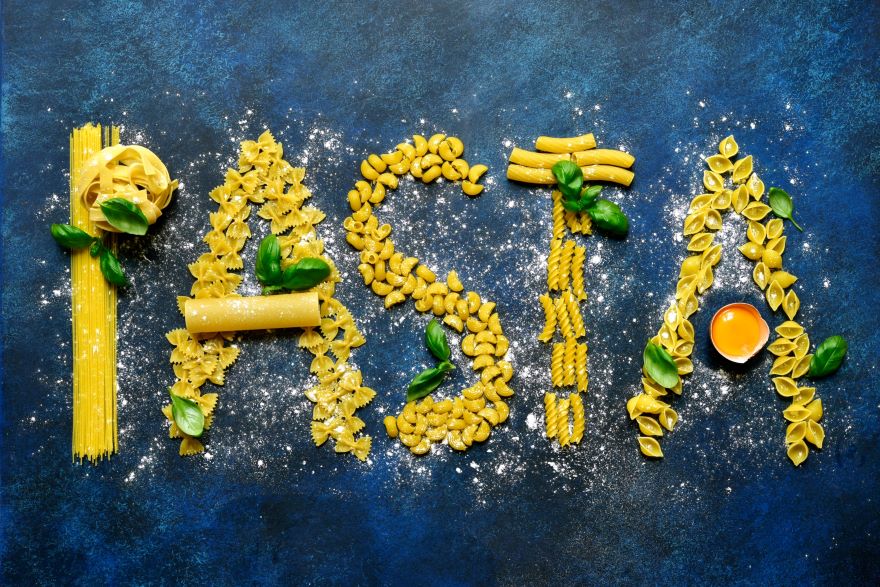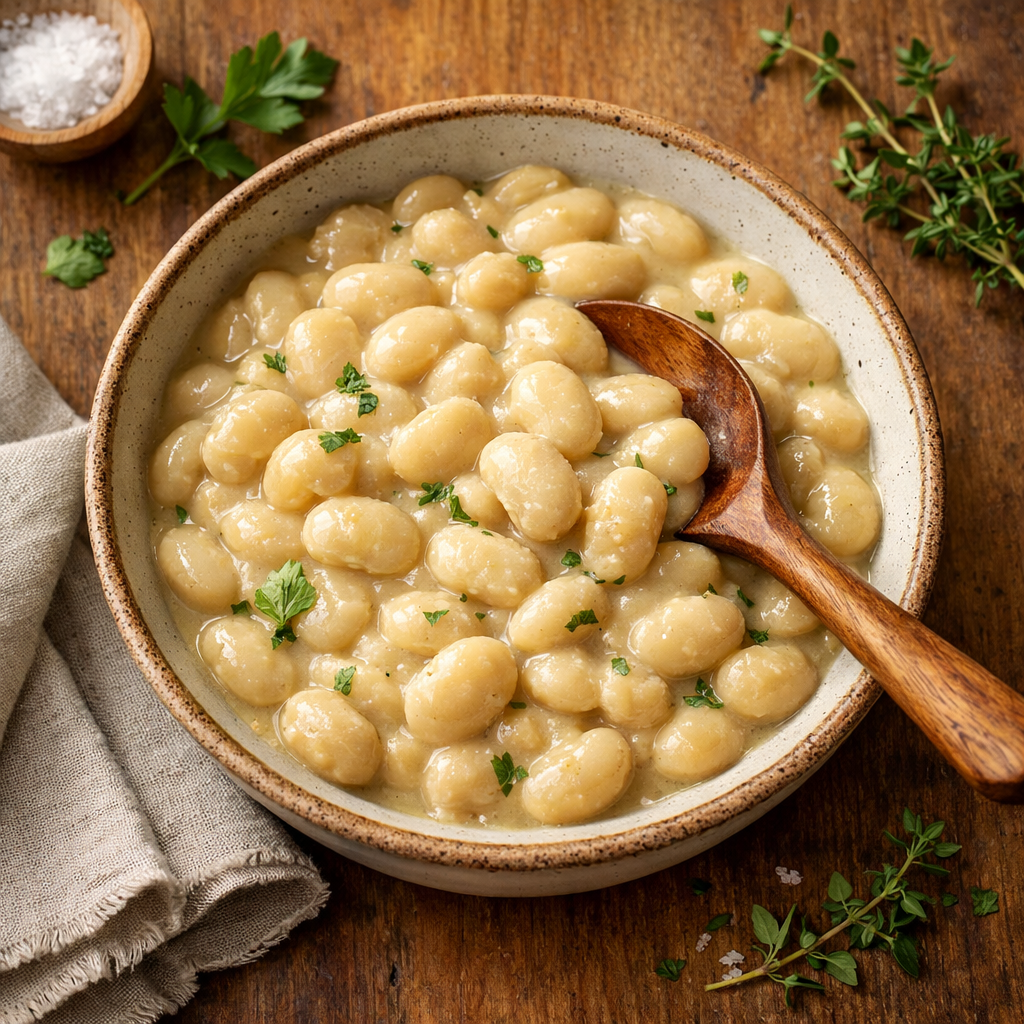I love pastina, those tiny pasta shapes that bring comfort in a bowl. For those who can’t eat gluten, there’s good news. Gluten-free pastina is now available, made from ingredients like corn, rice, or legumes.

These small, gluten-free pasta shapes cook up just like regular pastina. They’re perfect for soups, side dishes, or as a main meal.
Gluten-free pastina has a similar texture to wheat-based versions.
If you’re looking to try gluten-free pastina, I highly recommend Le Veneziane Italian Anellini Pastina. Made from corn flour, these tiny ring-shaped pasta pieces cook up just like traditional pastina and are perfect for soups or as a comforting side dish.
You can make tasty dishes with gluten-free pastina. One of my favorites is a simple recipe with broth, butter, and Parmesan cheese. It’s quick to cook and very filling. Gluten-free pastina opens up a world of pasta dishes for those who need to avoid gluten.
My Emotional Journey Into The World Of Gluten-Free Pastina

I remember the first time I tried gluten-free pastina. I was nervous but excited. Could it really taste as good as the regular kind?
As I cooked the tiny star-shaped pasta, the familiar smell filled my kitchen. My hopes began to rise.
The moment of truth came when I took my first bite. To my surprise, the texture was almost identical to traditional pastina. I felt a wave of relief and joy wash over me.
I experimented with different recipes, adding butter, cheese, and even eggs. Each dish brought back childhood memories of comfort and warmth.
One of my favorite ways to enjoy gluten-free pastina is in a simple soup. The tiny pasta soaks up the flavorful broth, creating a comforting meal perfect for chilly days.
I’ve come to appreciate the versatility of gluten-free pastina. It works well in both savory and sweet dishes, adapting to whatever flavors I’m craving.
Now, when I cook gluten-free pastina for friends and family, I feel proud to share this discovery. It’s more than just pasta – it’s a way to connect and create new memories without sacrificing taste or tradition.
Relatable Challenges I Faced And How I Overcame Them

Making gluten-free pastina was tricky at first. I struggled to find the right tiny pasta shape that wouldn’t turn mushy.
After some trial and error, I discovered gluten-free stelline pasta. It held its shape well and gave me that classic pastina texture I craved.
Getting the broth-to-pasta ratio just right took practice. Too much liquid left me with soup, while too little resulted in dry, clumpy pasta.
I solved this by starting with less broth and adding more as needed during cooking. This let me control the consistency better.
Eating out safely was another big challenge. I often felt left out or worried about cross-contamination at restaurants.
To tackle this, I started calling ahead to ask about gluten-free options. I also learned to pack snacks just in case there weren’t safe choices available.
Dealing with others’ lack of understanding was tough. Some people thought my diet was just a fad or exaggeration.
I overcame this by educating myself thoroughly about gluten intolerance. This gave me confidence to explain my needs clearly and stand firm in my dietary choices.
Key Gluten-Free Pastina Recipes That Marked Turning Points In My Health Journey
I discovered several gluten-free pastina recipes that changed my health for the better. These recipes helped me overcome digestive issues and regain my energy.
The Story Behind Each Recipe
My first breakthrough came with a simple gluten-free stelline pasta recipe. I was feeling tired and bloated all the time. A friend suggested trying gluten-free pasta. I was skeptical, but desperate to feel better.
I found a recipe using Jovial brand stelline pasta. It called for chicken broth, an egg, butter, and parmesan cheese. The tiny star shapes reminded me of the pastina I ate as a child.
Another game-changer was a veggie-packed pastina soup. This recipe added nutrients to my diet when I was struggling to eat enough vegetables.
Ingredients And Preparation Steps
For the basic gluten-free pastina:
- 1/2 cup gluten-free stelline pasta
- 1 cup chicken broth
- 1 beaten egg
- 1-2 tbsp butter
- 1/2 cup shredded parmesan
- Salt and pepper to taste
I boil the broth, add the pasta, and cook until soft. Then I stir in the egg, butter, and cheese.
When preparing gluten-free pastina, having the right cookware is essential. I’ve found the Cuisinart Chef’s Classic Stainless 4-Quart Saucepan perfect for cooking pastina dishes. Its size is ideal for soups and pasta, and the quality stainless steel ensures even heating.
- Chef's Choice Stainless: 18/10 mirror finish. Classic looks, professional performance.
- Unsurpassed Heat Distribution: Aluminum encapsulated base heats quickly and spreads heat evenly. Eliminates hot spots.
- Stainless Steel for Professional Results: 18/10 stainless steel cooking surface does not discolor, react with food or alter flavors. Great for classic cooking techniques like slow simmers, rolling boils and reduction of liquids.
- Cool Grip Handle: Solid stainless steel riveted handle stays cool on the stovetop.
- Drip-Free Pouring: Rim is tapered for drip-free pouring.
For the veggie soup version, I add:
- Diced carrots, celery, and onions
- Frozen peas
- Lemon zest
- Fresh parsley
I sauté the veggies, add broth and pasta, and simmer until tender.
Physical And Emotional Impact
The switch to gluten-free pastina was life-changing. My stomach pain and bloating decreased within days. I had more energy and could focus better at work.
Emotionally, I felt relieved. I could enjoy a comfort food from my childhood without getting sick. The familiarity of pastina brought back happy memories.
The veggie-packed version helped me get more nutrients. I noticed my skin looked clearer and I got sick less often.
Obstacles In Making It A Regular Part Of My Routine
Finding gluten-free pastina was tough at first. Many stores didn’t carry it. I had to order online, which was expensive.
Cooking time was another challenge. The gluten-free pasta could get mushy if overcooked. It took practice to get it right.
Some family members were reluctant to try the new recipes. They missed the traditional wheat pastina. I had to make separate meals sometimes, which was time-consuming.
Contribution To Overall Transformation
These gluten-free pastina recipes played a big role in my health turnaround. They helped me stick to a gluten-free diet long-term.
I learned to cook and experiment with new ingredients. This opened up a whole world of healthy eating for me.
My success with pastina gave me confidence to try other gluten-free substitutes. I expanded my diet and found many foods I could enjoy safely.
The improved nutrition from these recipes boosted my immune system. I got sick less often and recovered faster when I did catch a cold.
For those days when you want to elevate your gluten-free pastina dishes, the Vitamix A3500 Ascent Series Smart Blender is a game-changer. I use it to create smooth, creamy sauces to pair with pastina, or to quickly chop vegetables for my veggie-packed pastina soup.
- Program Settings: Five program settings (for Smoothies, Hot Soups, Dips & Spreads, Frozen Desserts, and Self-Cleaning) ensure walk-away convenience and consistent results. The A3500 pairs with the Vitamix Perfect Blend App: Unlock the Ascent Series A3500's full potential with 17 programs and 500+ recipes with the iOS + Android app.
- Touchscreen Controls give the machine a sleek silhouette and are easily wiped clean.Electrical Ratings - 120 V, 50-60 Hz, 12 Amps. Cord: 4 feet. HP: 2.2-peak
- You're in Control: Variable Speed Control and Pulse feature let you manually fine-tune the texture of any recipe
- Built-In Wireless Connectivity: The motor base is able to read the container size you’ve chosen and automatically adjust program settings and maximum blending times accordingly. Add a range of compatible container sizes, building a customized blending system designed to fit your needs.
- Programmable Timer: A built-in timer helps avoid over- or under-processing your custom recipes. Set the timer to the length of your blend, and it will turn the machine off automatically. What's in the Box: motor base, low-profile 64 oz. container, low-profile classic tamper, Simply Blending Cookbook
The Broader Impact Of Gluten-Free Pasta On My Overall Well-Being And Lifestyle

I’ve found that switching to gluten-free pasta can have far-reaching effects on health and daily life. For those with celiac disease or gluten sensitivity, it’s a game-changer.
Gluten-free pasta lets me enjoy my favorite dishes without discomfort. I’ve noticed improved digestion and more energy throughout the day.
Gluten-free options have expanded my culinary horizons. I’ve discovered new ingredients like quinoa and rice flour pasta that add variety to my meals.
Shopping has become an adventure. I read labels carefully and explore specialty stores. This attention to ingredients has made me more aware of what I’m putting in my body.
Eating out can be tricky, but many restaurants now offer gluten-free pasta. I always call ahead to check options and avoid cross-contamination risks.
Cooking at home is different too. I’ve learned new techniques to get the perfect texture. Using plenty of water and stirring often helps prevent clumping.
The cost of gluten-free foods can be higher, impacting my budget. But I view it as an investment in my health and well-being.
Practical Advice And Inspiration For Any Stage Of Your Journey
I know starting a gluten-free diet can feel overwhelming. But don’t worry! I’m here to help with some practical tips.
First, focus on naturally gluten-free foods like fruits, vegetables, and lean proteins. These form a healthy foundation for any diet.
Next, explore gluten-free grains. Quinoa, rice, and gluten-free pasta can easily replace wheat in many dishes.
When shopping, always read labels carefully. Gluten can hide in unexpected places. Look for certified gluten-free products to be sure.
I recommend keeping a food diary. This helps track symptoms and identify potential trigger foods.
Don’t be afraid to experiment in the kitchen! Try new recipes and ingredients. You might discover new favorites.
Remember, it’s okay to make mistakes. Learning takes time. Be patient with yourself as you adjust.
Connect with others on a similar journey. Online forums and local support groups can offer valuable advice and encouragement.
Lastly, celebrate your progress! Every small step is a victory. Whether it’s finding a new gluten-free snack or mastering a recipe, acknowledge your achievements.

*We may earn a commission for purchases made using our links. Please see our disclosure to learn more.


![Le Veneziane - Italian Anellini Pastina [Gluten-Free], (4)- 8.8 oz. Pkgs](https://m.media-amazon.com/images/I/91+qPe8fHAL._SL1500_._SL160_.jpg)



